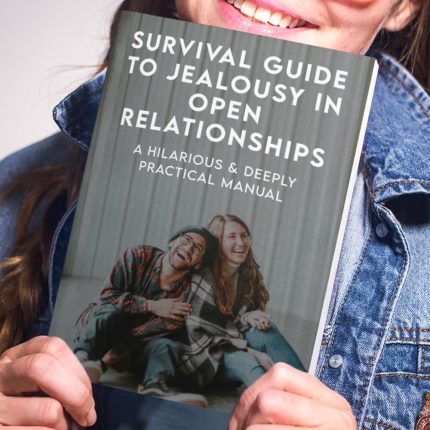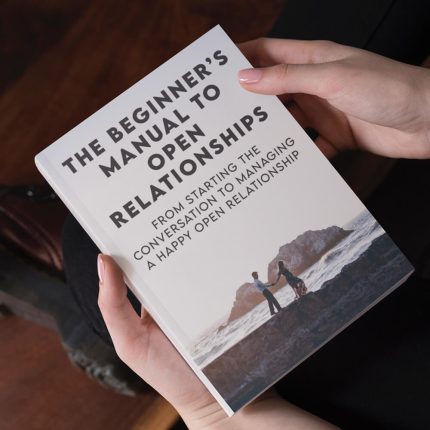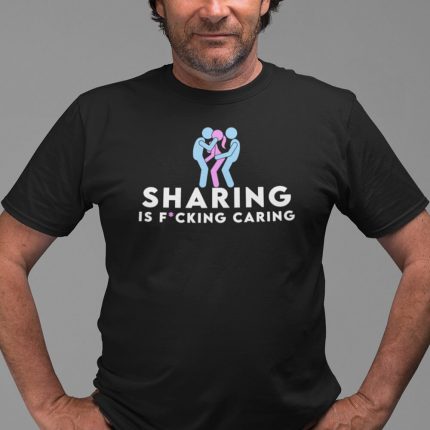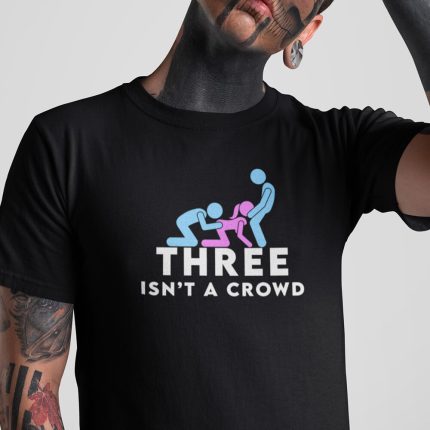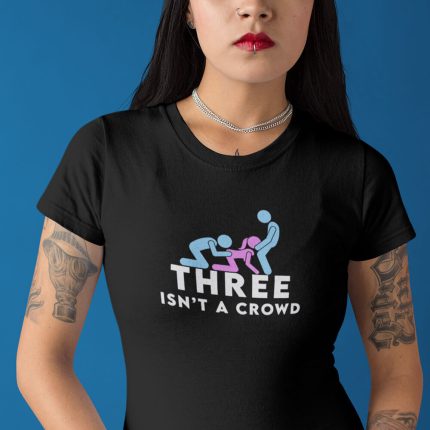Welcome, fellow love adventurers and poly renegades! If you’ve ever thought, “Why settle for just one headline act when you can have a whole festival lineup—with a star performer in the center?”—then you’re in the right place. This playbook is your guide to hierarchical polyamory, a relationship model where love isn’t distributed equally among all partners, but rather, one partner holds the VIP status while others add flavor to the mix. Buckle up and get ready to explore a world where communication, consent, and a dash of humor create a love story that’s as layered as your favorite artisan latte. Useful Interruption: Not sure which relationship vibe fits you best? Take our Relationship Test, it’ll give you the real insight into your natural relationship style. Then, dive into our binge-worthy guides (from the tried-and-true to the “wait, that’s a thing?”) and find the perfect relationship type for your life: Now back to the main article but yeah take the test...
Understanding Hierarchical Polyamory: The Basics
What Exactly Is Hierarchical Polyamory?
Hierarchical polyamory is like the ultimate relationship remix with a clearly defined lead singer and an ensemble of supporting acts. In this model, one partner is designated as the primary partner—your rock, your go-to confidant, your emotional anchor—while additional partners (secondary, tertiary, etc.) contribute to your life without eclipsing that primary bond.
Think of it as the difference between the headliner at a concert and the opening acts that warm you up. It’s not about playing favorites in a negative sense; it’s about recognizing that different relationships can serve different emotional and practical needs. Keywords such as primary partner, consensual non-monogamy, and relationship hierarchy are your roadmap to understanding this nuanced approach to love.
Historical Context & Cultural Shifts
While the idea of loving multiple people isn’t new (just ask the ancient Greeks or the free-spirited folks of the 1960s), hierarchical polyamory as a concept has gained traction in recent decades. As societal values shift and the quest for authentic connections becomes a priority, many polyamorous communities have adopted a hierarchical structure to help manage time, emotional investment, and responsibilities.
Studies published in relationship journals have noted that couples who designate a primary partner often report higher levels of stability and satisfaction—even as they enjoy the benefits of additional connections. In a world where playlists are curated and every detail matters, hierarchical polyamory is all about designing your ideal love life with structure and heart.
The Many Layers: Primary, Secondary, and Beyond
Understanding the Relationship Tiers
In hierarchical polyamory, not all relationships are created equal—and that’s perfectly okay! Here’s a quick breakdown:
- Primary Partner: This is your main squeeze, your go-to person. They often share significant life responsibilities with you—think living together, finances, or long-term planning. They’re your emotional anchor.
- Secondary Partners: These partners are important too, but they don’t share the same level of commitment as your primary. They might fill specific niches in your life—adventure buddies, intellectual sparring partners, or creative muses.
- Tertiary (and beyond): These connections might be more casual, serving as fun, low-pressure ways to explore new experiences without upending your core relationship dynamic.
This tiered approach helps everyone know where they stand and ensures that the emotional needs of the primary partnership are met, while still leaving room for additional love and excitement.
EXPLORE OUR ETHICAL NON-MONOGAMY & OPEN RELATIONSHIP SHOP
👨💻👩💻 Digital Store (Instant Download)
🍆💦 Clothing Store (Worldwide Delivery Available)
I Love Watching Pop Art T-Shirt (Black)
$29.99Fuck Each Other Not The Planet Unisex T-Shirt (Black)
$29.99It's Not Cheating If He Watches T-Shirt (Black)
$29.99Sharing Is Caring Unisex T-Shirt (Black)
$29.99Three Isn't a Crowd Unisex T-Shirt (Black)
$29.99Real Men Share Pop Art T-Shirt (Black)
$29.99Sharing Is Caring Daddy Cap (Black)
$39.99Three Isn't a Crowd Unisex T-Shirt (White)
$29.99Real Men Share Pop Art T-Shirt (White)
$29.99Fuck Each Other Not The Planet Unisex T-Shirt (White)
$29.99I Love Watching Pop Art T-Shirt (White)
$29.99Multiple Lovers - Sharing Is Caring Unisex T-Shirt (Black)
$29.99Why Choose a Hierarchical Structure?
Some might ask, “Why not just be egalitarian?” And that’s a fair question! The answer is simple: structure can bring clarity and stability. Hierarchical polyamory allows you to designate time, energy, and resources in a way that minimizes confusion and helps prevent feelings of neglect. It’s like having a relationship GPS that ensures you never lose your way back to your primary partner—even when you’re off exploring new romantic neighborhoods.
For many, the appeal lies in having the best of both worlds: the security and intimacy of a primary bond, plus the variety and growth that come with additional connections.
Communication and Boundaries: The Heart of Hierarchical Polyamory
Keeping the Conversation Alive
If there’s one thing that holds any successful relationship together, it’s communication. In hierarchical polyamory, this need is amplified by the multiple layers of connection. Honest, regular dialogue isn’t just recommended—it’s non-negotiable.
Here are some fun, practical tips:
- Schedule “Love Huddles”: Set aside time weekly or monthly with your primary partner to discuss feelings, logistics, and even the quirky challenges of juggling multiple relationships.
- Group Chats and One-on-Ones: While group conversations can help align everyone’s expectations, one-on-one check-ins with secondary partners ensure that each relationship feels valued.
- Embrace Radical Honesty: Whether it’s confessing a bout of jealousy or discussing new feelings, being upfront and open paves the way for stronger bonds and fewer misunderstandings.
Establishing Boundaries That Work
Boundaries are the unsung heroes of any relationship—and in hierarchical polyamory, they’re absolutely essential. Clear, mutually agreed-upon boundaries prevent confusion and ensure that every partner’s needs are met.
Consider these boundary-setting strategies:
- Define Your Core: Clearly outline what your primary relationship entails. This might include shared living arrangements, financial responsibilities, or future plans.
- Flexibility is Key: As your relationships evolve, so too should your boundaries. Regularly revisit and adjust them to keep everyone comfortable.
- Discuss Time Management: Allocate quality time for each partner. Whether it’s a scheduled date night with your primary or a spontaneous coffee meet-up with a secondary, planning can help keep all connections vibrant.
Consent, Ethics, and Trust: The VIP Passes to a Thriving Polyamorous Life
The Non-Negotiable Power of Consent
In any form of non-monogamy, consent is king—or queen! Hierarchical polyamory is no exception. Every new connection, every shift in relationship dynamics, must be met with enthusiastic, ongoing consent. Think of it as the ultimate relationship contract, renewed as often as you update your favorite playlist.
Transparency is your best friend here. Openly discuss your needs, limits, and expectations with all partners. This not only builds trust but also ensures that everyone feels respected and valued.
Building and Maintaining Trust
Trust isn’t built overnight; it’s cultivated through consistent actions, open communication, and a willingness to be vulnerable. In hierarchical polyamory, where multiple relationships interweave, trust becomes the glue that holds everything together.
Some ideas for building trust include:
- Regular Check-Ins: Whether it’s a scheduled conversation or a spontaneous heart-to-heart, checking in with your partners reassures everyone that their feelings matter.
- Transparent Scheduling: Share your plans openly to avoid misunderstandings—yes, even if it means coordinating calendars like a high-stakes event planner!
- Celebrate Wins Together: Acknowledge milestones, whether big or small. Every shared laugh, resolved conflict, or successful boundary negotiation reinforces the trust in your relationships.
Emotional and Psychological Dynamics: Riding the Wave
Handling Jealousy and Insecurity
Let’s be real—jealousy is the uninvited guest at every party, and hierarchical polyamory is no exception. However, instead of letting it crash your fun, you can manage it with a mix of humor, reflection, and open conversation.
When jealousy strikes, try these tactics:
- Name That Monster: Give your jealousy a silly name and acknowledge it with a laugh. Sometimes, reducing its power with humor is all you need to diffuse tension.
- Talk It Out: Have an honest discussion with your partner(s) about your feelings. Remember, vulnerability is not a weakness—it’s a bridge to deeper understanding.
- Self-Reflection: Take time to explore the root causes of your insecurities. Journaling or even a quick mental pep talk can help you get in tune with your emotions.
Emotional Resilience and Personal Growth
Hierarchical polyamory can be a transformative journey. Many find that managing multiple relationships helps build emotional resilience, enhances self-awareness, and even sparks personal growth. It’s like relationship boot camp—but with more love and fewer push-ups.
Embrace the ups and downs as opportunities to learn, laugh, and grow. Every challenge is a stepping stone to becoming a more confident, compassionate version of yourself.
Practical Guidance: Transitioning into Hierarchical Polyamory
Your Step-by-Step Guide to the VIP Experience
Ready to venture into hierarchical polyamory? Here’s a roadmap to help you navigate this exciting terrain:
- Do Your Research: Immerse yourself in literature, podcasts, and online communities dedicated to polyamory. Knowledge is power—and it makes you look super cool at parties.
- Have the Heart-to-Heart: Sit down with your current partner(s) (or yourself, if you’re starting solo) to discuss your desires, fears, and expectations. Honesty now prevents heartache later.
- Define Your Hierarchy: Clearly outline what your primary relationship will look like and how secondary connections will fit into your life. This clarity is the secret sauce to minimizing confusion.
- Set Up Regular Check-Ins: Schedule periodic conversations with all involved parties. Think of it as a relationship tune-up to ensure everyone’s on track and happy.
- Embrace Flexibility: Recognize that relationships evolve. Be willing to adjust boundaries and expectations as you learn what works best for your unique dynamic.
Real-Life Stories: Polyamorous Adventures in the Hierarchy
Tales from the VIP Section
Let’s sprinkle in some real-life magic! While every hierarchical polyamorous relationship is as unique as your favorite meme, here are a couple of inspiring stories (with a side of humor) to light your way:
- The Lead and the Ensemble: Meet Casey and Jordan, who designated their decade-long relationship as the primary bond, while also exploring a supportive, fun connection with Taylor. Their secret? Weekly “relationship rehearsals” where they hash out feelings, celebrate wins, and even share a laugh over the chaos of coordinating dinner dates.
- The Gradual Harmony: Alex always felt there was room for more love in life but feared losing the essence of their core bond. By gradually introducing a secondary partner into the mix—with clear boundaries and open dialogues—Alex discovered that the added perspective not only enriched their life but also deepened the trust with their primary partner.
These stories are a reminder that hierarchical polyamory isn’t about replacing one love with another—it’s about expanding your capacity for connection while keeping your heart’s VIP seat reserved for that one special person.
Family, Legal, and Social Considerations
Integrating Hierarchical Polyamory into Your Life
As with any relationship model, practical realities must be considered. Navigating family dynamics, legal issues, and social perceptions can be challenging when you’re embracing hierarchical polyamory.
Some tips for smoothing the path include:
- Open Discussions with Family: When the topic comes up, explain your relationship structure clearly and confidently. A little humor and transparency can go a long way in demystifying your lifestyle.
- Legal Preparedness: Consult professionals to understand how relationship agreements, cohabitation contracts, or other legal documents might help safeguard your interests.
- Social Support: Engage with online communities or local meetups that celebrate polyamory. Sharing experiences with like-minded people can provide both validation and practical advice.
Dealing with External Judgments
Let’s be real: not everyone will get your relationship style—and that’s okay. The key is to stay true to yourself and communicate your choices with confidence. Often, a well-timed joke or a clever comeback can defuse a tense situation and remind you that your happiness is what truly matters.
Digital Age Dynamics: Navigating Online Communities and Apps
Finding Your Tribe in a Click
In today’s digital era, the internet is teeming with resources for hierarchical polyamory. Whether it’s dedicated forums, social media groups, or specialized dating apps, there’s a wealth of support and information just a click away.
Here, you can share stories, ask for advice, and even swap funny memes about the joys and challenges of keeping your relationship hierarchy in check. Digital communities provide a safe space to learn, laugh, and connect with others who are on the same adventurous path.
Global Perspectives: Hierarchical Polyamory Around the World
Cultural Variations and Shifting Norms
While hierarchical polyamory might seem like a modern concept, its acceptance and practice vary widely across cultures. In some regions, traditional norms dominate, while in others, more fluid relationship models are gaining recognition. Global conversations about love and commitment are expanding, and hierarchical polyamory is increasingly part of that dialogue.
Understanding these cultural nuances can broaden your perspective and remind you that there’s no one “right” way to love—only the way that feels true to you.
The Future of Relationship Models
As social attitudes evolve and digital connectivity continues to reshape how we form connections, the future of hierarchical polyamory looks both promising and dynamic. Experts predict that as long as people keep questioning old norms and embracing new ideas, relationship models will continue to evolve in exciting, unexpected ways.
So, whether you’re here to learn, experiment, or simply enjoy the journey, remember that your love life is a living, breathing story—one that you get to write with every choice you make.
Research, Data, and Expert Insights on Hierarchical Polyamory
What the Numbers Say
Research in the realm of polyamory is still emerging, but early studies indicate that couples who adopt a hierarchical model often report:
- Greater emotional clarity in managing relationship roles
- Improved conflict resolution through structured communication
- A sense of stability, even when exploring multiple connections
These findings suggest that a well-defined relationship structure—where the primary bond is prioritized—can offer both security and growth in the often-complex landscape of polyamory.
Expert Voices: Wisdom from the Field
We reached out to relationship experts who have navigated the polyamorous scene with style and humor. Here’s what they had to share:
- Dr. Luna Love, Relationship Researcher: “Hierarchical polyamory allows individuals to enjoy multiple connections while maintaining a stable core. It’s like having a favorite book series with one epic installment that ties it all together.”
- Sam “The Organizer” Rivera, Life Coach: “For many, having a designated primary partner provides the necessary anchor in a sea of possibilities. It’s about balancing freedom with security—and that balance is truly an art form.”
FAQ: Your Burning Questions About Hierarchical Polyamory
1. What is hierarchical polyamory?
Hierarchical polyamory is a relationship model where one partner is designated as the primary, with other partners playing secondary or tertiary roles. It offers a structured way to enjoy multiple relationships while prioritizing a core bond.
2. How does hierarchical polyamory differ from egalitarian polyamory?
In egalitarian polyamory, all partners are considered equal with no designated ranking, whereas hierarchical polyamory clearly defines a primary relationship that takes precedence over secondary connections.
3. Why do some people choose a hierarchical structure?
Many find that a hierarchical structure provides clarity, stability, and a sense of security by ensuring that the primary relationship remains the central focus while still allowing for additional connections.
4. Can hierarchical polyamory work for everyone?
Like any relationship model, it depends on personal needs and communication styles. Some thrive on the clear structure, while others may prefer a more egalitarian approach. It’s all about finding what fits your heart and lifestyle.
5. How do you define boundaries in a hierarchical polyamorous relationship?
Boundaries are defined through open, ongoing discussions about expectations, time management, emotional investment, and logistics. Clear boundaries help prevent misunderstandings and ensure that every partner feels valued.
6. What are some common challenges in hierarchical polyamory?
Common challenges include managing jealousy, ensuring that secondary partners feel respected, and balancing time between multiple relationships. Regular check-ins and transparent communication are key to overcoming these hurdles.
7. How do you handle jealousy in a hierarchical setup?
Address jealousy head-on through honest conversations, self-reflection, and sometimes even humor. Recognize that jealousy is natural and work together to understand its root causes and establish reassuring boundaries.
8. Is it possible for a hierarchical structure to evolve over time?
Absolutely. Relationships are dynamic, and many find that their hierarchy can shift as needs and feelings change. Regular communication allows for adjustments that keep the structure healthy and relevant.
9. How do you introduce the idea of hierarchical polyamory to a new partner?
Start with open, honest discussions about your current relationship dynamics and what you’re looking for. Clear communication from the start helps set expectations and build trust.
10. What resources can help someone explore hierarchical polyamory?
There are plenty of books, podcasts, blogs, and online communities dedicated to polyamory. Some popular picks include “More Than Two,” various polyamory forums on Reddit, and support groups where people share their experiences and advice.
Resources and Community Support: Your Next Steps Toward Hierarchical Polyamory
Top Books, Podcasts, and Blogs
Ready to dive deeper into the art of structured love? Check out these must-read resources:
- "More Than Two" by Franklin Veaux & Eve Rickert – A comprehensive guide to navigating the complexities of polyamory with practical advice and heartfelt stories.
- "The Polyamorists Next Door" by Elisabeth Sheff – A look into the social dynamics and challenges of living in a polyamorous world.
- Podcasts: “Multiamory” and “Polyamory Weekly” offer real-life stories, expert interviews, and plenty of humor about managing multiple relationships.
- Blogs & Online Communities: Explore dedicated forums on Reddit (such as r/polyamory) and join Facebook groups where members share insights and support each other on their polyamorous journeys.
Finding Professional Support and Peer Networks
Whether you’re just curious or already deep into the polyamorous lifestyle, professional guidance can be invaluable. Look for therapists or counselors who specialize in non-monogamous relationships, and don’t underestimate the power of peer support. Engaging with communities where members celebrate diversity in love can offer practical advice, reassurance, and a good laugh when you need it most.
Remember, every relationship model is a journey of discovery. With the right mix of honesty, communication, and a dash of humor, you can craft a hierarchical polyamorous life that is both fulfilling and authentically you.

